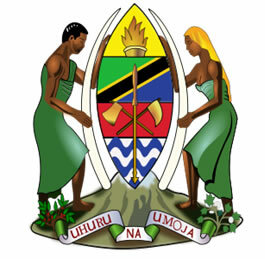The State of São Paulo is located in the Southeast region of Brazil. THE capital is São Paulo and the acronym SP.
- Area: 248,262,199 square kilometers
- Limits: to the north and northeast with Minas Gerais, northwest it borders Rio de Janeiro, west with Mato Grosso do Sul, south with Paraná and east with the Atlantic Ocean
- Number of municipalities: 645
- Population: 44.3 million inhabitants
- Gentile: paulista
- Main cities: São Paulo, Guarulhos, Campinas, São Bernardo do Campo, Santo André, Osasco, São José dos Campos, Ribeirão Preto, Sorocaba, Santos, Mauá, Carapicuíba, São José do Rio Preto, Diadema and Jundiaí.

Historical Aspects
The colonization process of São Paulo began in 1532, with the village of São Vicente, the oldest in Brazil.
The village was founded by Martim Afonso de Souza. From São Vicente departed the expeditions of pioneers that made it possible to explore the rest of the country.
In principle, roads and trails were opened for the arrival to the interior of the state and, also, Rio de Janeiro and Minas Gerais.
Read more about colonization history:
- Precolonial Period
- Brazil Colony
- Entries and Flags
Population
São Paulo is the most populous state in Brazil. Its inhabitants are made up of diverse peoples, mainly Indians, who were already in the region at the time of the discovery, blacks and whites from Europe of various nationalities.
The construction of the history of São Paulo was attended by Portuguese colonizers and representatives of 70 other nationalities. Immigrants arrived in the state at different times, always driven by the economy.
Among the immigrants who contributed to the construction of the history of São Paulo are the blacks, enslaved in the coffee and sugar cane plantations.
Also part of the process were Italians, Germans, Arabs, Spaniards and Japanese. The Italian presence is remarkable, with a neighborhood formed by immigrants of that nationality, Bexiga, in the city of São Paulo.
The same happened with the Japanese, who are concentrated in the Liberdade neighborhood, also in São Paulo.
Read further: Brazilian urbanization.
Economy
The state contributes the largest share of the Brazilian GDP (Gross Domestic Product), with almost 30% of the total. Most of the economy is centered on the manufacturing industry. It is located in São Paulo, and in its respective metropolitan region, the largest industrial park in the country.
Agriculture is also a strong brand in the region, with emphasis on beef cattle and sugarcane production.
Among the reasons that justify the significant numbers of the economy in São Paulo is the geographic position. In the center-south of the country and also with an outlet by sea. In São Paulo is located the largest and busiest port in Brazil, located in Santos.
As a result of the high population and the circulation of financial resources, the trade and services sectors also deserve prominence in the economy. The metropolitan region concentrates more than 200 shopping malls and is home to a large network of multinationals.
Read too: Industrialization in Brazil.
Economic Expansion
From its foundation until the mid-19th century, the local economy was centered on subsistence, mainly based on agriculture. The main products were coffee and sugar cane.
Economic diversity was boosted by the arrival of European immigrants, especially Italians, after the end of black slavery.
The arrival of Italians and other immigrants contributed to the offer of skilled labor, opening of roads and construction of railway lines.
The modes of transport allowed the flow of production to other states and the construction of the port of Santos favored exports.
The economy of São Paulo was also favored by the political control that the state exercised in the country for several periods. After the Proclamation of the Republic, leaders from São Paulo alternated in the Presidency with politicians from Minas Gerais.
It was called the Coffee with Milk Policy. Having control of politics, politicians favored the distribution of resources to their respective states.
Research more on this subject. read:
- Coffee with Milk Policy
- Governors Policy
- Taubate Agreement
Cultural aspects
The offer of cultural goods in São Paulo is wide due to the age of the region and the aforementioned influence of different peoples. Most of São Paulo's cultural wealth is concentrated in the capital.
Among the highlights are monuments such as the Sé Cathedral and the Igreja da Ordem Terceira do Carmo. The first, in neo-Gothic style, was delivered in 1967, and the second, in the Baroque style, in the 18th century.
The diversity of museums is recognized internationally. The Masp (São Paulo Art Museum), the MAC (Contemporary Art Museum) and the Lasar Segall museum are in São Paulo.
The style of urban culture is revealed with the offer of parks, such as Ibirapuera, designed by Oscar Niemeyer and Burle Marx.
Relief
The area comprised by the State of São Paulo is located in plateau and coastal regions. The plateau comprises most of the territory, reaching 90%. The coastal region, on the other hand, reaches 622 kilometers of coastline, with the presence of beaches, massifs and mangroves.
Climate
The climate is tropical and humid. Average temperatures are around 22°C for most of the year.
Hydrography
The territory is crossed by the Paraná basin. The main tributaries are: Rio Grande, Tietê and Paranapanema.
Want to know more? Access the articles:
- Climate of the Southeast Region
- Southeast region
- Southeastern States
- Southeast culture
- Southeast Region Economy
- Brazil states
- Acronyms of Brazilian States



